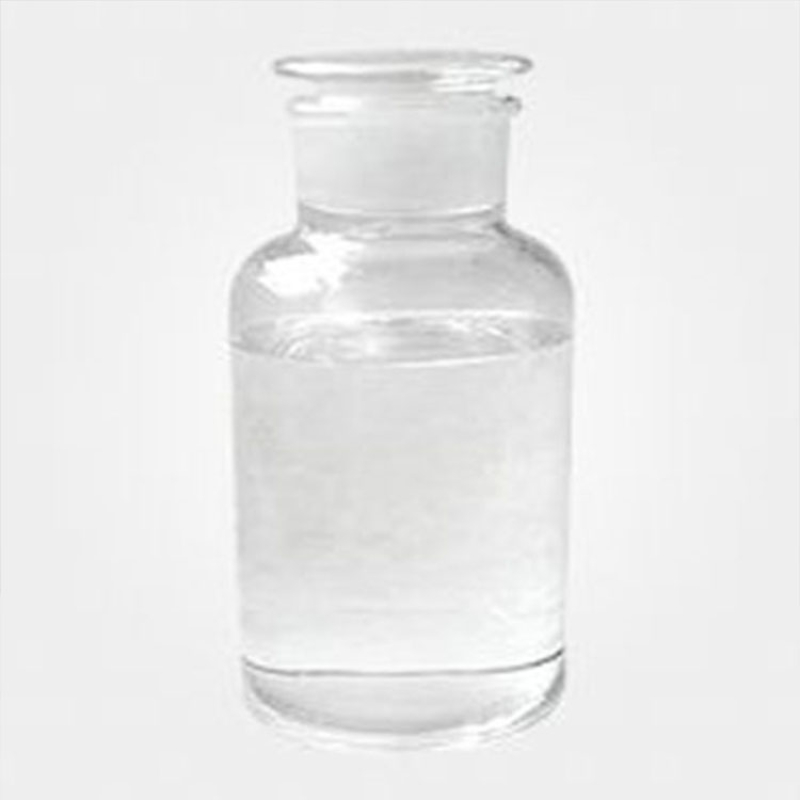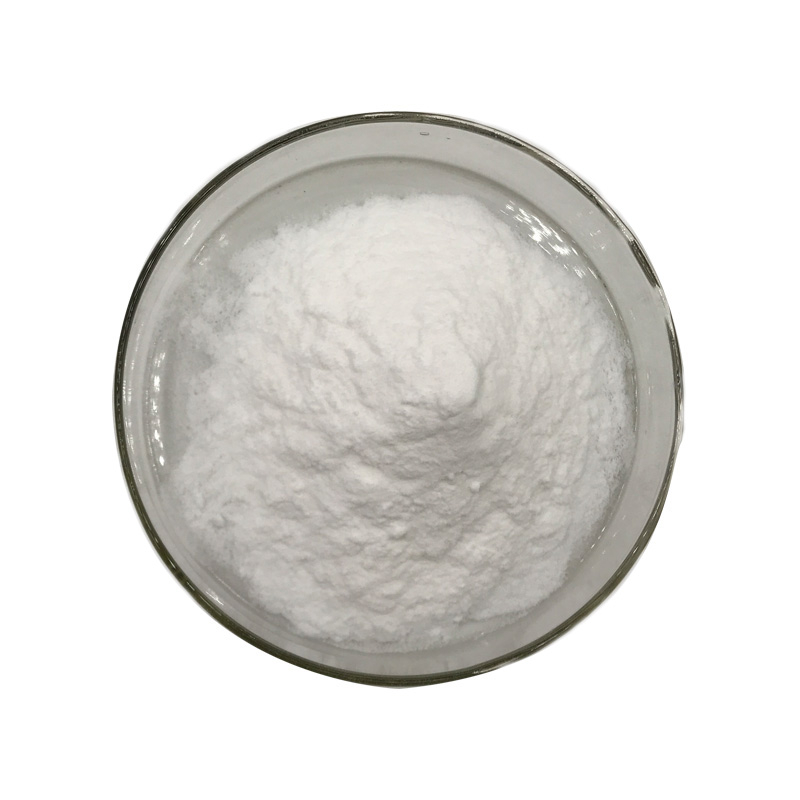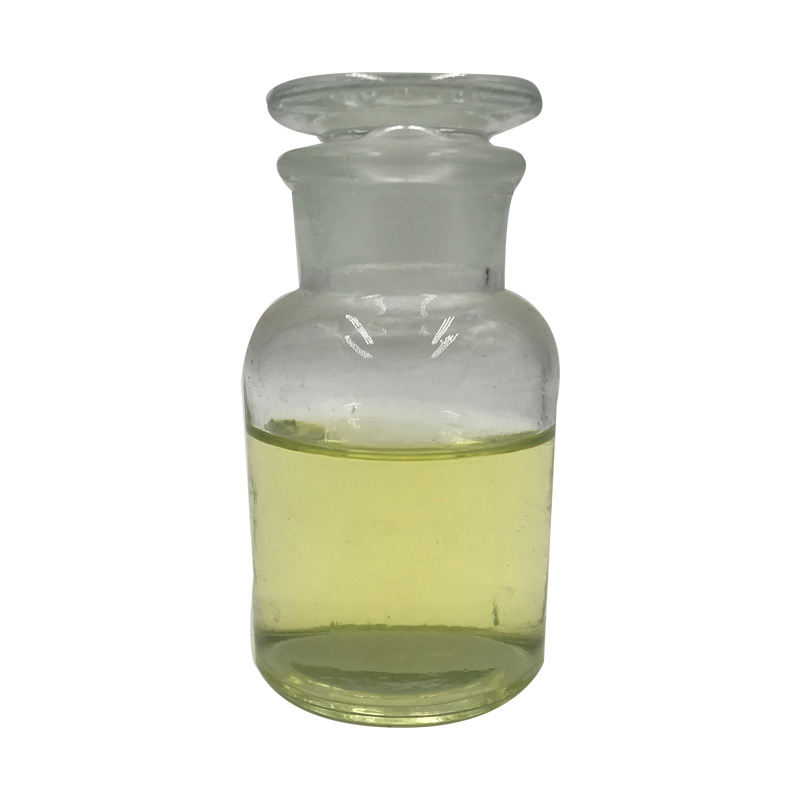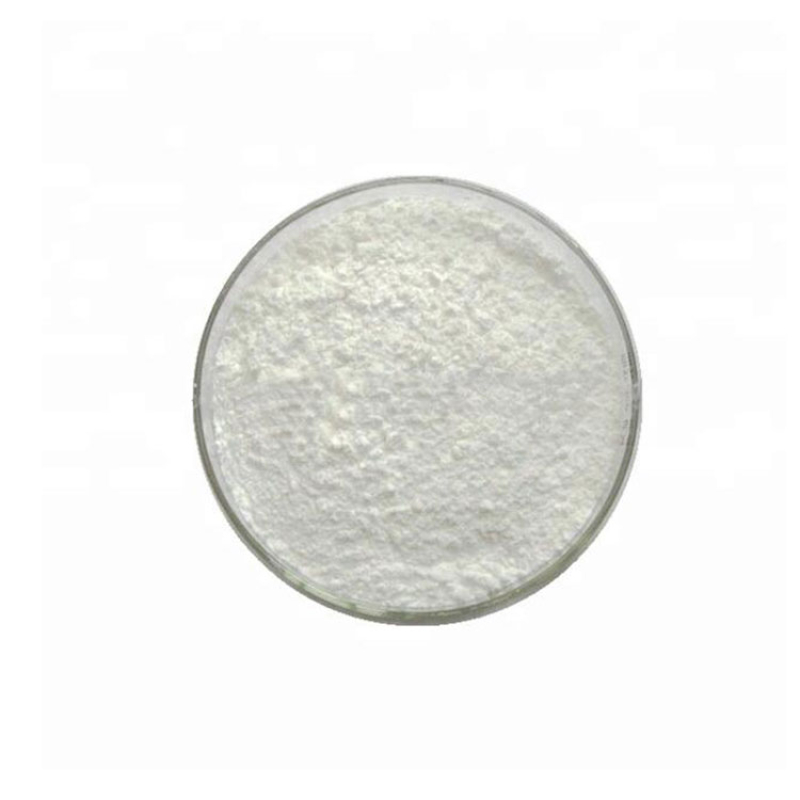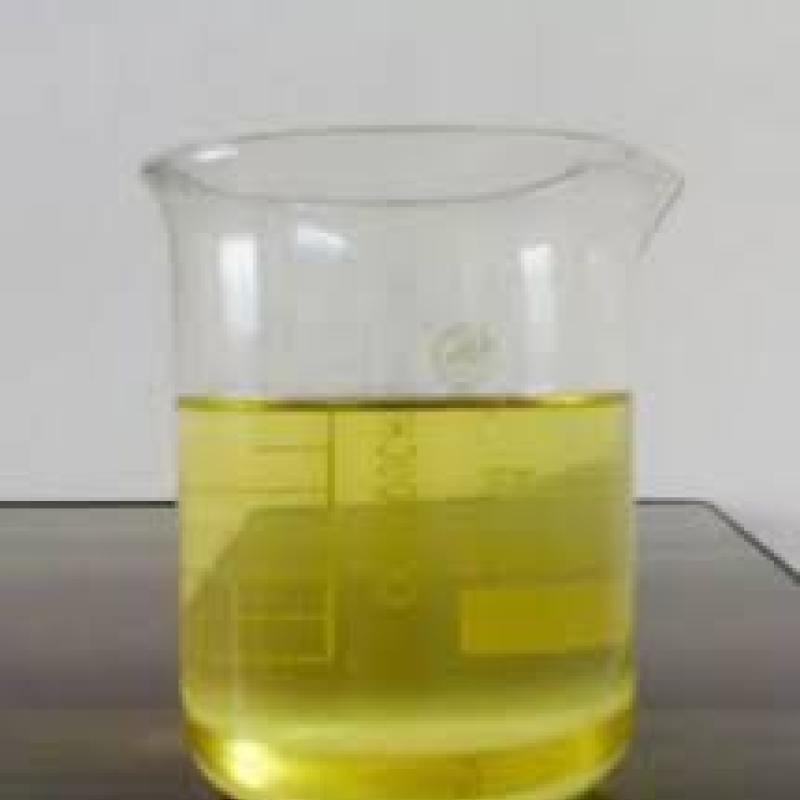Products Description of Chloramine B CAS#127-52-6Chloramine B hydrate is a white crystalline powder.Chloramine B Chemical PropertiesMelting point 190°CBoiling point 189℃[at 101 325 Pa]density 1.484[at 20℃]vapor pressure 0Pa at 20℃storage temp. Keep in dark place,Inert atmosphere,2-8°Csolubility H2O: 0.1 g/mL, clearform solidpka1.88[at 20 ℃]Water Solubility 0.1 g/mLMerck 14,2074BRN 3599287InChIKeyKDNCILYKSYKEFJ-UHFFFAOYSA-NLogP0.14 at 26℃EPA Substance Registry SystemChloramine B (127-52-6) Safety InformationHazard Codes CRisk
Contacter maintenant
Products Description of Chloramine B 99% CAS#127-52-6Chloramine B, also known as sodium benzenesulfonyl chloride, is a white crystalline powder. It is explosive when exposed to impact, friction, fire or other ignition sources.
Contacter maintenant
Products Description of Trifluoromethanesulfonic anhydride CAS#358-23-6Trifluoromethanesulfonic anhydride is an organic compound with the chemical formula (CF3SO2)2O.
Contacter maintenant
Products Description of METHYLENE BLUE CAS#61-73-4Methylene blue (MB) is a reducing agent that is easily soluble in water and easily crosses cell membranes. It has relatively no toxic side effects and is an approved clinical drug. Since its introduction to the biological community in the 19th century, methylene blue has been widely used: as a dye in neurochemicalbook anatomy and bacteriology; in biochemical research, methylene blue serves as an indicator of redox effects.
Contacter maintenant
Dodecyltrimethylammonium Bromide Chemical PropertiesMelting point 246 °C (dec.)(lit.)density 1.1566 (rough estimate)vapor pressure 0Pa at 20℃refractive index 1.5260 (estimate)Fp 246°Cstorage temp. Store below +30°C.solubility H2O: 0.1 M at 20 °C, clear, colorlessform Powdercolor White to slightly yellowWater Solubility solubleSensitive Hygroscopicλmaxλ: 240 nm Amax: ≤0.2λ: 250 nm Amax: ≤0.03λ: 260 nm Amax: ≤0.02λ: 500 nm Amax: ≤0.02BRN 3597463InChIKeyXJWSAJYUBXQQDR-UHFFFAOYSA-MCAS DataBase Reference1119-94-4(
Contacter maintenant
Paraffin, Liquid CAS#8012-95-1Mineral oil mist is a colorless, oily liquid aero-sol dispersed in air with an odor like burned lubricating oil.The odor threshold is 1.0 ppm. Specific gravity (H2O:1)=0.865 at 60℃; Boiling point = 250- 360*C; Vaporpressure = <0.5 mmHg at 20℃; Flash point= 193℃;Autoignition temperature = 260- 371℃. HazardIdentification (based on NFPA-704 M Rating System):Health 0, Flammability 1, Reactivity 0. Insoluble in water.Product Name:Paraffin, liquidSynonyms:PARAFFIN VISCID, EXTRA PURE, DAB, PH. EU R., B. P., PH.
Contacter maintenant
Products Description of POTASSIUM TITANATE CAS#12030-97-6Potassium titanate is a white solid with a relative density of 3.1 and a melting point of 1515°C.
Contacter maintenant
Veg glycerin CAS#56-81-5Product Description:Discover the versatility and purity of our Vegetable Glycerin (CAS#56-81-5), a natural and biodegradable alternative to petroleum-based glycerin.
Contacter maintenant
Products Description of Benzyl alcohol CAS#100-51-6Benzyl alcohol, also known as benzyl alcohol, has a molecular formula of C6H5CH2OH and a density of 1.045 g/mL at 25°C (lit.). It is the simplest fatty alcohol containing phenyl groups and can be regarded as hydroxymethyl-substituted benzene or phenyl-substituted methanol. It is a colorless, transparent, viscous liquid with a faint aromatic odor. Sometimes, after being left for a long time, benzyl alcohol will have a slight smell of bitter almonds due to oxidation.
Contacter maintenant
Products Description of Solvent Blue 104 CAS#116-75-6Solvent blue 104 is used for packaging, decoration, paint, ink, and coloring of polyester, nylon, etc.Solvent Blue 104 Chemical PropertiesMelting point 236.5-237.5 °CBoiling point 639.5±55.0 °C(Predicted)density 1.220±0.06 g/cm3(Predicted)vapor pressure 0-0.001Pa at 20-25℃storage temp. Refrigerator, under inert atmospheresolubility Chloroform (Slightly)form Solidpka-0.26±0.20(Predicted)color Very Dark Blue to BlackDissociation constant0 at 30℃CAS DataBase Reference116-75-6(CAS DataBase Reference)E
Contacter maintenant
Products Description of Calcium gluconate CAS#299-28-5Calcium gluconate is the calcium salt of gluconic acid. It is a white crystalline or granular powder with a melting point of 201°C.
Contacter maintenant
Products Description of Styrenated phenol CAS#61788-44-1Light yellow to amber viscous liquid.
Contacter maintenant
Products Description of Poly(vinyl alcohol)CAS#25213-24-5White powderPoly(vinyl alcohol) Chemical PropertiesMelting point >300 °CEPA Substance Registry SystemVinyl acetate vinyl alcohol polymer (25213-24-5)Safety InformationRisk Statements 23/24/25-36/38-39/23/24/25Safety Statements 26-36/37-45WGK Germany 1RTECS TR8100000 Factory and Equipment ShowFast delivery timeInventory 2-3 working days New production 7-10 working days
Contacter maintenant
Products Description of Tannic acid CAS#1401-55-4This product is a light yellow to light brown powder with a special odor and an extremely astringent taste; soluble in 1 part of water or ethanol, soluble in acetone, and insoluble in chloroform or ether.Tannic acid Chemical PropertiesMelting point 218 °C (lit.)Boiling point 862.78°C (rough estimate)density 1.2965 (rough estimate)refractive index 1.7040 (estimate)FEMA 3042 | TANNIC ACID (QUERCUS SPP.)Fp 198°Cstorage temp. Storage temperature: no restrictions.solubility ethanol: soluble100mg/mL, yellow
Contacter maintenant
Products Description of Chlorhexidine CAS#55-56-1Used for gingivitis (acute necrotizing ulcerative gingivitis), oral infections after dental surgery, prevention and treatment of oral infections in patients with cancer and leukemia, stomatitis and follicular stomatitis caused by bacterial or fungal oral infections caused by wear of dentures Chemicalbook , Reduce dental plaque.
Contacter maintenant
Products Description of Tin sulfate CAS#7488-55-3White or light yellow crystalline powder. Soluble in water, solubility 33g/100ml water at 35℃. Soluble in dilute sulfuric acid.Stannous sulfate Chemical PropertiesMelting point 360 °Cdensity 4,15 g/cm3vapor pressure 0Pa at 20℃storage temp. no restrictions.form SolidSpecific Gravity1.35color White to off-whitePH1.6 (50g/l, H2O, 20℃)Water Solubility 330 g/L (20 ºC)Merck 14,8790Exposure limitsACGIH: TWA 2 mg/m3NIOSH: IDLH 100 mg/m3; TWA 2 mg/m3Stability:Stable, but moisture sensitive.
Contacter maintenant
Products Description of 3,4-Dibromothiophene CAS#3141-26-23,4-Dibromothiophenol is a colorless to pale yellow liquid with a boiling point of 221-222°C and a melting point of 4-5°C.3,4-Dibromothiophene Chemical PropertiesMelting point 4-5 °C (lit.)Boiling point 221-222 °C (lit.)density 2.188 g/mL at 25 °C (lit.)refractive index n20/D 1.640(lit.)Fp >230 °Fstorage temp. Keep in dark place,Sealed in dry,Room Temperatureform Liquidcolor Clear colorless to yellowSpecific Gravity2.188BRN 107642InChIKeyVGKLVWTVCUDISO-UHFFFAOYSA-NCAS DataBa
Contacter maintenant
Products Description of 6,7-Dimethoxy-3,4-dihydroisoquinoline hydrochloride CAS#20232-39-76,7-Dimethoxy-3,4-dihydroisoquinoline hydrochloride is an intermediate for the synthesis of tetrabenazine.
Contacter maintenant
Products Description of Sesamol CAS#533-31-3Sesamol, also known as 3,4-methylenedioxyphenol, is a fat-soluble lignan compound. It is an important component of sesame oil and an important quality stabilizer for sesame oil. Sesamol is present in sesame seeds, sesame oil and sesame meal, and can be continuously decomposed by sesamelin during thermal processing. The highest concentration in sesame oil can reach 64.4 mg/(100 g).Sesamol has a very strong antioxidant capacity and has been proven to have anti-inflammatory and intestinal function regulating effects.
Contacter maintenant
Products Description of 1,3-bis(3-glycidoxypropyl)tetramethyldisiloxane CAS#126-80-7Colorless liquid1,3-bis(3-glycidoxypropyl)tetramethyldisiloxane Chemical PropertiesMelting point <0°CBoiling point 184 °C2 mm Hg(lit.)density 0.996 g/mL at 20 °C(lit.)refractive index n20/D 1.452Fp 110°CSpecific Gravity0.996Hydrolytic Sensitivity3: reacts with aqueous baseBRN 223966InChIInChI=1S/C16H34O5Si2/c1-22(2,9-5-7-17-11-15-13-19-15)21-23(3,4)10-6-8-18-12-16-14-20-16/h15-16H,5-14H2,1-4H3InChIKeyMFIBZDZRPYQXOM-UHFFFAOYSA-NSMILES[Si](C)(C)(
Contacter maintenant
Products Description of N,beta-Dimethylphenethylamine hydrochloride CAS#5969-39-1A phenethylamine derivative as sympathomimetics.
Contacter maintenant
Products Description of cocoyl glutamic acid CAS#210357-12-3Colorless transparent liquidFactory and Equipment ShowFast delivery timeInventory 2-3 working days New production 7-10 working days
Contacter maintenant
Products Description of 3-Pyridylacetic Acid Hydrochloride CAS#6419-36-93-Pyridine acetate hydrochloride is a colorless solid with m.p.161~163℃, soluble in water.3-Pyridylacetic Acid Hydrochloride Chemical PropertiesMelting point 161-163 °C(lit.)storage temp. Inert atmosphere,Room Temperaturesolubility DMSO (Sparingly), Methanol (Slightly)form Crystalline Powder, Crystals and/or Chunkscolor White to light yellow or beigeMerck 14,7971BRN 3696630Stability:HygroscopicInChIInChI=1S/C7H7NO2.ClH/c9-7(10)4-6-2-1-3-8-5-6;/h1-3,5H,4H2,(H,9,10);1HInChIKe
Contacter maintenant
Products Description of 2-Mercaptobenzimidazole CAS#583-39-1Antioxidant MBI, 2-mercaptobenzimidazole, is a thiol-substituted nitrogen heterocyclic compound and an important class of pharmaceutical intermediates, widely used in medicine, pesticides, chemicals and other fields.
Contacter maintenant




